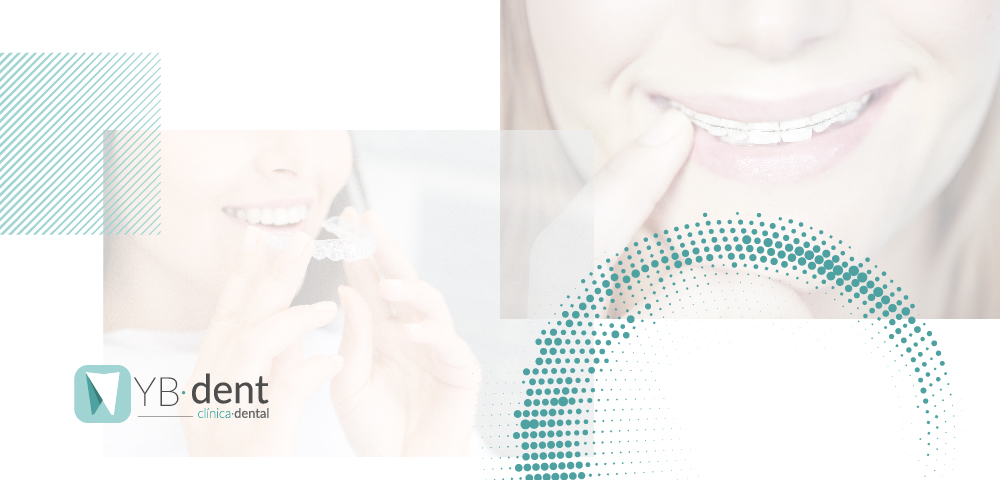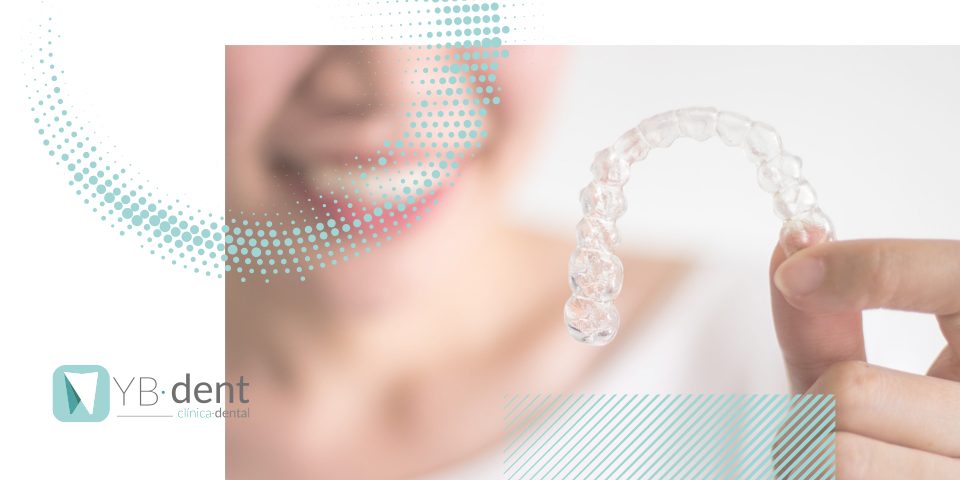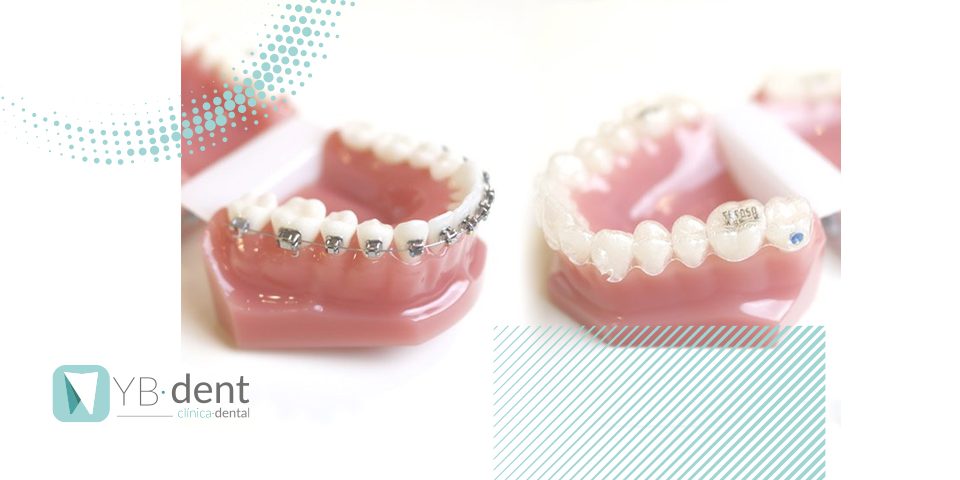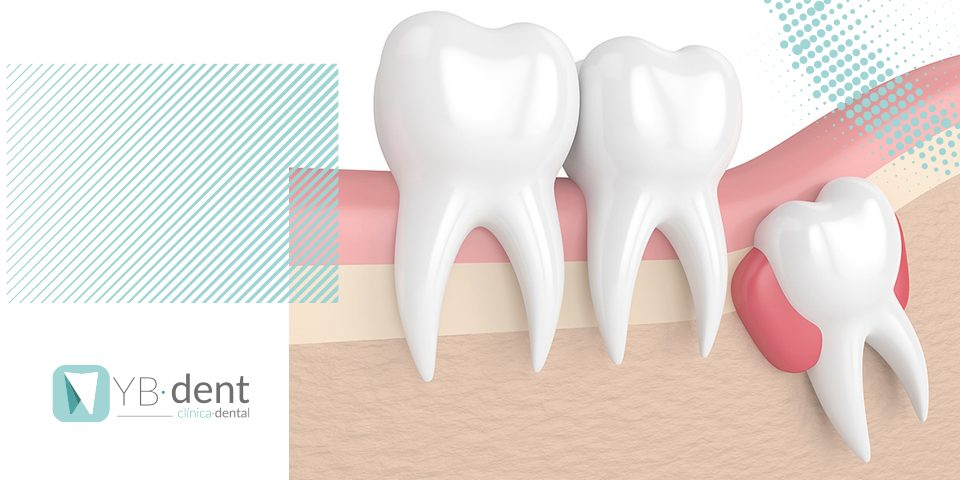Brackets o Invisalign, ¿cuál es mejor para la salud dental de los niños?

Ya estamos en septiembre, y eso significa la vuelta al cole para los miles de estudiantes que hay por toda España. Desde Clínica Dental YB·dent vamos a mostraros dos de los métodos más utilizados para mejorar la estética y salud dental, que son los Brackets e Invisalign.
En primer lugar, conviene señalar que no existe un método mejor que otro y, como ahora veremos, ambos tienen sus ventajas y desventajas. La diferencia de precio o las preferencias del cliente o profesional son uno de los ejemplos. La clave para elegir correctamente entre los Brackets o Invisalign es realizar un buen diagnóstico que nos indique qué opción es más adecuada.
¿Qué puede hacer que nos decantemos por los brackets?
Los expertos en ortodoncia suelen sentirse muy cómodos con las técnicas de aparatología fija como los brackets. Estos consiguen resultados muy satisfactorios sobre todo utilizando los más recientes brackets de fricción baja, que ejercen una fuerza muy ligera cuando movemos la dentadura. Otras variedades de este aparato como los brackets estéticos o de zafiro han convencido a muchas personas, sobre todo adultas. Estas buscan no perder estética dental por ello, que es una de las grandes pegas que se le achaca a los tradicionales brackets de metal.
Los brackets se seguirán utilizando cuando el paciente así lo desee, sobre todo por razones económicas. Invisalign tiene un coste más elevado que los brackets. A su vez también encontramos motivos quirúrgicos debido a prescripciones médicas para el momento en que se va a hacer la cirugía y su posterior cerclaje.
¿Qué puede hacer que nos decantemos por Invisalign?
La ortodoncia invisible lleva ya con nosotros más de 20 años. Tras fuertes inversiones en I+D para su mejora continua, los expertos en ortodoncia pueden disponer de esta herramienta que, con un diagnóstico correcto, se puede planificar y controlar de mejor manera que con la aparatología fija. Esta técnica suele ser elegida por los pacientes debido a ser invisible y, por tanto, más estético para la vista. A su vez, es una opción más cómoda de llevar.
Sin embargo, para el experto que lo instala supone una gran ventaja el que pueda controlar de manera individual cada uno de los dientes así como su movimiento en tres dimensiones. Estas técnicas para alinear los dientes no causan ningún tipo de fricción por lo que los movimientos son mucho más suaves, con los beneficios de salud y bienestar que esto tiene en el paciente.
Diferencias fundamentales entre los brackets e Invisalign
Para el paciente las ventajas de Invisalign respecto a los brackets tradicionales son claras. Estos últimos son alineadores extraíbles para comer o cepillarse los dientes. Además de ser más cómodos y estéticos respecto a los brackets, la fuerza que ejercen sobre los es mucho más suave y prácticamente nada molestas. Esto se porque se produce sobre la superficie del plástico que tiene Invisalign. Por otro lado, las consultas al dentista se pueden realizar más separadas en el tiempo sin riesgo ninguno (2 o tres meses).
Esto es una ventaja para personas que, por ejemplo, trabajan en el extranjero. Por último, para el ortodoncista Invisalign posee unas prestaciones más avanzadas y mayor control sobre los movimientos dentarios.
Por tanto, ¿mejor brackets o Invisalign?
La respuesta a esta pregunta es muy sencilla: ponte en manos de un especialista, como los que tenemos en Clínica Dental YB·dent. Gente con experiencia, con dominio de las aparatologías más vanguardistas y que te puede ofrecer un diagnóstico adecuado. En la práctica, Invisalign ha provocado que muchos más adultos acudan a la consulta para pedir información sobre este. Esto es porque se trata de un tratamiento mucho más estético que los tradicionales brackets. Cada persona es un caso, y este debe ser estudiado, ya que la complejidad del diagnóstico determinará el tratamiento más adecuado.
En Clínica Dental YB·dent encontrarás a tu disposición un amplio equipo de expertos en ortodoncia que te ayudarán a encontrar el mejor tratamiento para ti. No dudes en visitarnos en C/ Viver 25, 46020 Valencia. Además, nuestros teléfonos de contacto son los siguientes: 961 672 098 / 696 556 977.



